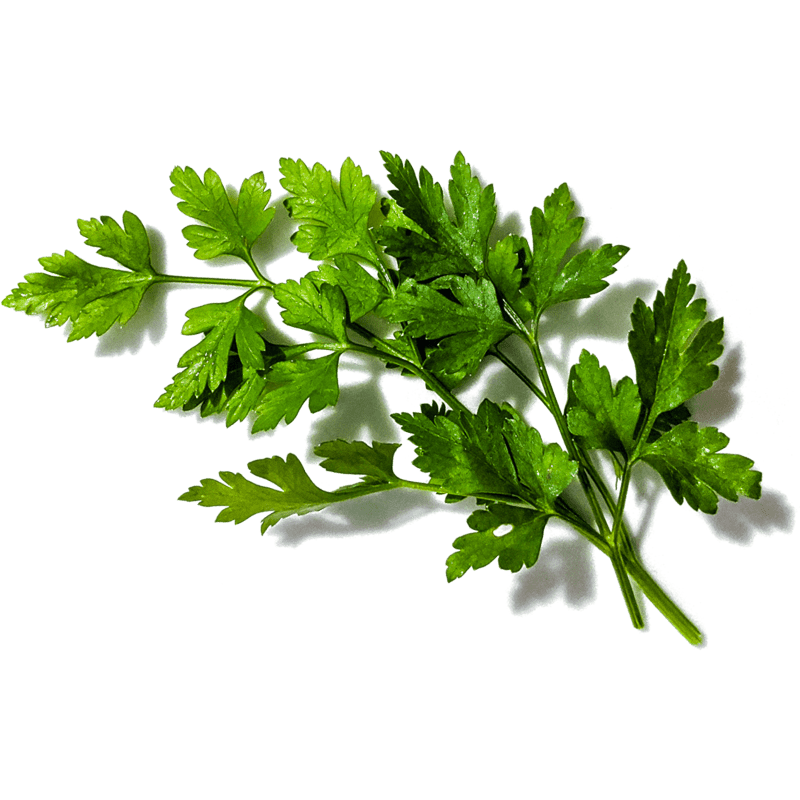Parsley
Petroselinum crispus L. – Apiaceae

Parsley is a biennial, cultivated plant. The root is spindle-shaped. In the first year, a leaf rosette is developed consisting of deeply divided leaves, the leaves are light green in color. Medicinal parts of the plant are the dried root and leaf. This plant is used both as a spice and as a medicinal plant. It has been cultivated for more than 2000 years in Southeast Europe and Western Asia. The medicinal properties of parsley were first mentioned in ancient Greece.
The root contains 0.1-0.5% essential oil, and the most abundant components of the oil are the phenylpropane compounds apiol and myristicin. Also, the parsley root contains flavonoid heterosides (apiin, apioside), furanocoumarins, polyacetylenes, sugars and mucus. Parsley leaves, in addition to essential oil, also contain flavonoids, vitamins A, B1, B2, and C. Parsley has a diuretic effect (encourages urine excretion), and also exhibits a mild antispasmodic effect (relaxes the smooth muscles of the urinary tract), so it can also be recommended to relieve spasms in diseases of the urinary system in men and women. Parsley essential oil shows an antioxidant and anti-inflammatory effect, blocks calcium channels (in the intestinal tract and uterus), and has an antitumor effect, so it can be recommended as a cancer prevention. Also, parsley shows an immunomodulatory effect, by modifying the activity of cells that are part of the immune system.

Parsley extracts show broad-spectrum antimicrobial activity against a large number of bacteria, such as: B. subtilis, P. aeruginosa, S. epidermidis, S. aureus, E. coli, Klebsiella pneumoniae. Parsley also has a bactericidal effect when it comes to bacterial infection caused by Helicobacter pylori, and in addition to its antibacterial effect, this plant also has an antifungal effect (it is excellent in the fight against fungal infections). Daily consumption of parsley can significantly reduce the concentration of glucose in the blood, potentially by inhibiting gluconeogenesis and directly stimulating glycolysis, and it is also used as a means of improving food digestion.
In the form of tea mixtures, as well as some phytopreparations, it is used as a diuretic in urinary tract infections, as well as in the treatment of urinary tract stones. In traditional medicine, parsley is used for nocturnal urination in children as well as for irregular menstruation (dysmenorrhea). Parsley is a phototoxic plant, so when using preparations based on parsley, you must protect yourself from sunlight, use creams with a high protection factor on parts of the body that are not covered by clothing. The use of parsley is contraindicated during pregnancy, as well as in people with weakened kidney function. Allergic reactions to parsley are possible, and furanocoumarins and polyacetylenes are responsible for this, so people prone to allergies must use parsley preparations with caution.
